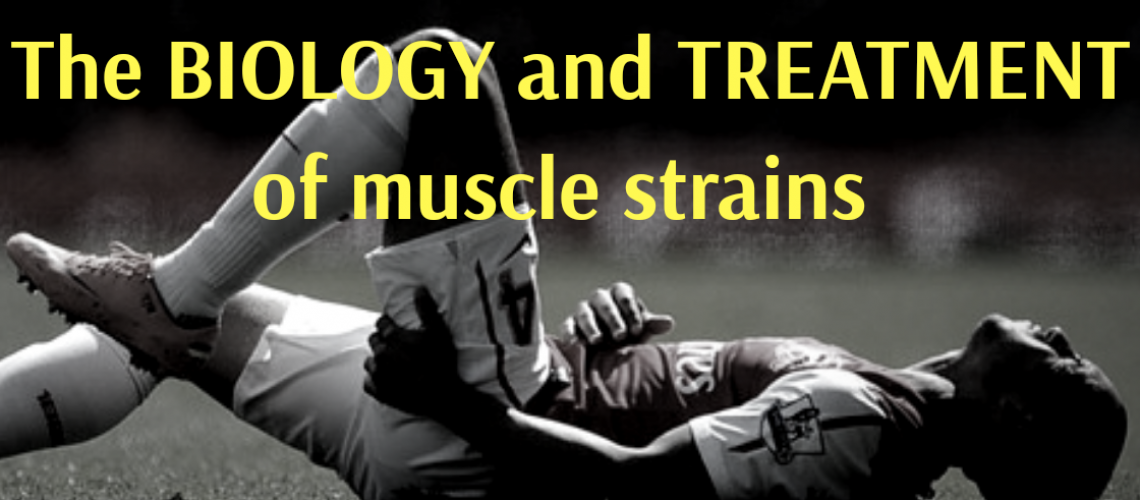We’ve all been there before – you pulled a muscle. You hear conflicting advice from your teammates, coach and google. Ice it — no wait, heat it. Rest it – no, wait, load it. Tape it – no wait, don’t tape it. This article outlines what happens on a cellular level, and how we can use these stages to guide a safe and efficient rehabilitation of a muscle strain.
Muscle injuries are among the most common injuries in sports. Failed treatment, or returning too early can result in a delay for an athlete’s return to sport for weeks or even months. Muscle strains occur when there is an excessive tensile load, leading to overstraining of the muscle fibers, and consequently resulting in a rupture of these fibres
Skeletal muscle heals through a repair process, whereas the bone heals through a regenerative process. The healing of skeletal muscle follows a fairly constant pattern. The 3 phases are:
1. Destruction Phase
Rupture and ensuing necrosis of the muscle fibers, the formation of a hematoma between the ends of the ruptured muscle, and an inflammatory cell reaction
2. Repair Phase
Phagocytosis of dead tissue, regeneration of muscle fibres, and production of a connective tissue scar, as well as capillary ingrowth into the injured area
3. Remodelling Phase
Maturation of the regenerated muscle fibres, reorganization of the scar tissue, and recovery of the functional capacity of the muscle

TREATMENT BASED ON THE BIOLOGICAL PROCESS OF MUSCLE HEALING
DAY 1 TO 3 – TO REST OR NOT TO REST?
Early mobilization induced more rapid capillary ingrowth into the injured area, resulting in better regeneration of muscle fibres, and more parallel orientation in regenerating fibres; as compared to immobilization. Furthermore, early mobilization results in quicker return of biomechanical strength. However, some studies have also shown that mobilization too early can result in a larger connective tissue scar, and re-ruptures at the site of the muscle trauma. Therefore, for mild strains (Grade 1) early mobilization is suggested as early as day 2. For larger strains (Grade 2), a period of 1-3 days of immobilization is necessary to allow the cellular response to take place to begin healing – but only until the scar reaches sufficient strength to bear loading
DAY 3 TO 5 – TIME TO START LOADING
Once the acute phases of the injury seems to be progressing favorably, the muscle needs to be loaded – namely through ISOMETRIC LOADING (muscle contraction where the length of the muscle remains constant, and tension changes) within a low level of pain. The local application of heat, as well as static and dynamic stretching within the limits of pain is suggested. Any exercise should follow a comprehensive warm-up to improve muscle elasticity and viscosity prior to loading
DAY 7 & BEYOND
Isotonic training can be implemented when the muscle is able to undergo an isometric contraction at full-stretch with minimal pain. Isotonic training is when the tension/load stays the same, while the muscle changes length (ie. Resistance training under control). Dynamic and sport-specific activities will follow when the muscle is able to undergo isotonic loading through a full-ROM with no pain.
SUMMARY
A small period of immobilization (depending on the severity of the injury) is necessary to accelerate the formulation of scar tissue, but only until it can be loaded isometrically with a low level of pain. At this point, gradual mobilization of the tissue and an isometric loading program should be initiated to prevent atrophy, loss of strength, and loss of extensibility. Then, the patient should be progressed through a controlled loading program, eventually finishing with sport-related drills. The duration of said injuries will depend on the severity of the injury itself.

